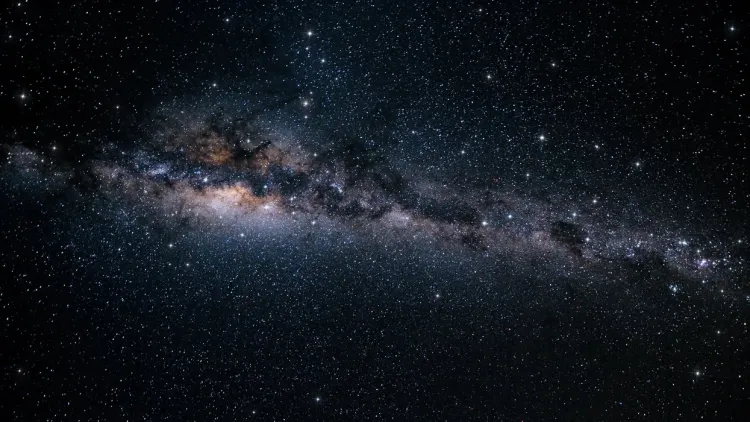Outer Space Just Got a Little Brighter: A New Discovery Challenges Our Understanding of the Universe
In a fascinating discovery that challenges our understanding of the cosmos, a team of astronomers using cameras on NASA's New Horizons spacecraft has found that the universe is far brighter than expected. The spacecraft, which famously visited Pluto in 2015, was recently used to measure the darkness of interplanetary space. What they found was unexpected: space is twice as bright as anticipated, sparking a flurry of scientific discussions about what could be contributing to this newfound brightness.

Todd Laau, a researcher at the National Optical Infrared Astronomy Research Laboratory in Tucson, Arizona, shared that the team discovered a background glow in space that was about 10 nanowatts per square meter per steradian. For context, Laau compared it to the light emitted by the star Sirius or a refrigerator a mile away—a faint but noticeable glow. This discovery is key for astronomers trying to understand the overall energy content of the universe and its cosmic history of star formation.
What Could Be Behind the Extra Light?
The scientists believe that there may be more faint galaxies or star clusters contributing to this background light than their previous models suggested. Another possibility is that black holes at the centers of seemingly ordinary galaxies could be emitting extra energy into space. However, Laau and his team have raised the intriguing possibility of a more exotic explanation: cold dim matter. While dark matter has long been theorized to exist, its exact nature remains a mystery. Some theories suggest that dark matter could be made up of exotic subatomic particles that decay or collide, emitting bursts of energy that add to the universal glow.
While this speculation is intriguing, Laau emphasized that their work was focused solely on measuring the flux of light, leaving more speculative ideas about dark matter to physicists. They have urged others to take their findings and explore what they could mean for our understanding of the universe.
The Challenge of Measuring the Unseen
The measurement was based on seven images captured by New Horizons’ Long Range Reconnaissance Imager (LORRI) camera, which was stationed about 4 billion miles from Earth at the time of the observation. The spacecraft was far beyond the influence of interplanetary dust or planetary light—meaning that the brightness detected was coming from pure space. After subtracting the light from distant Kuiper Belt objects and any stars, an unknown light source remained, sparking speculation.
This breakthrough is considered one of the most accurate measurements of the background light yet, and it follows earlier work by Michael Zof from the Rochester Institute of Technology. While there is still much to learn, Zof and Laau’s efforts have significantly advanced our understanding of the faint light that permeates space, which has been invisible to the naked eye.
What Could This Mean for Our Understanding of the Universe?
The discovery opens the door to new possibilities for understanding the cosmic landscape and its hidden components. Although many ideas have been proposed about the origin of the extra light, including the presence of faint galaxies or black holes, there is still no consensus. The possibility of dark matter being responsible for this excess light has intrigued some scientists but remains highly speculative.
Dan Hooper, a physicist at the Fermi National Accelerator Laboratory, expressed skepticism about the dark matter theory. He and his colleagues have not been able to come up with any plausible new physics that could explain the extra light, except for a few unappealing and far-fetched options.This discovery raises many questions about the nature of the universe and could eventually lead to breakthroughs in physics and astronomy. As scientists continue to investigate the source of this extra light, it remains to be seen how this will shape our understanding of the cosmos.What are your thoughts on the possibility of cold dim matter contributing to the brightness of the universe? Could this challenge our understanding of dark matter and lead to new insights?
What's Your Reaction?

















